When to plant rhubarb – for a delicious crop of crunchy stems
Find out when to plant rhubarb to enjoy the best homegrown harvest of this tasty veg
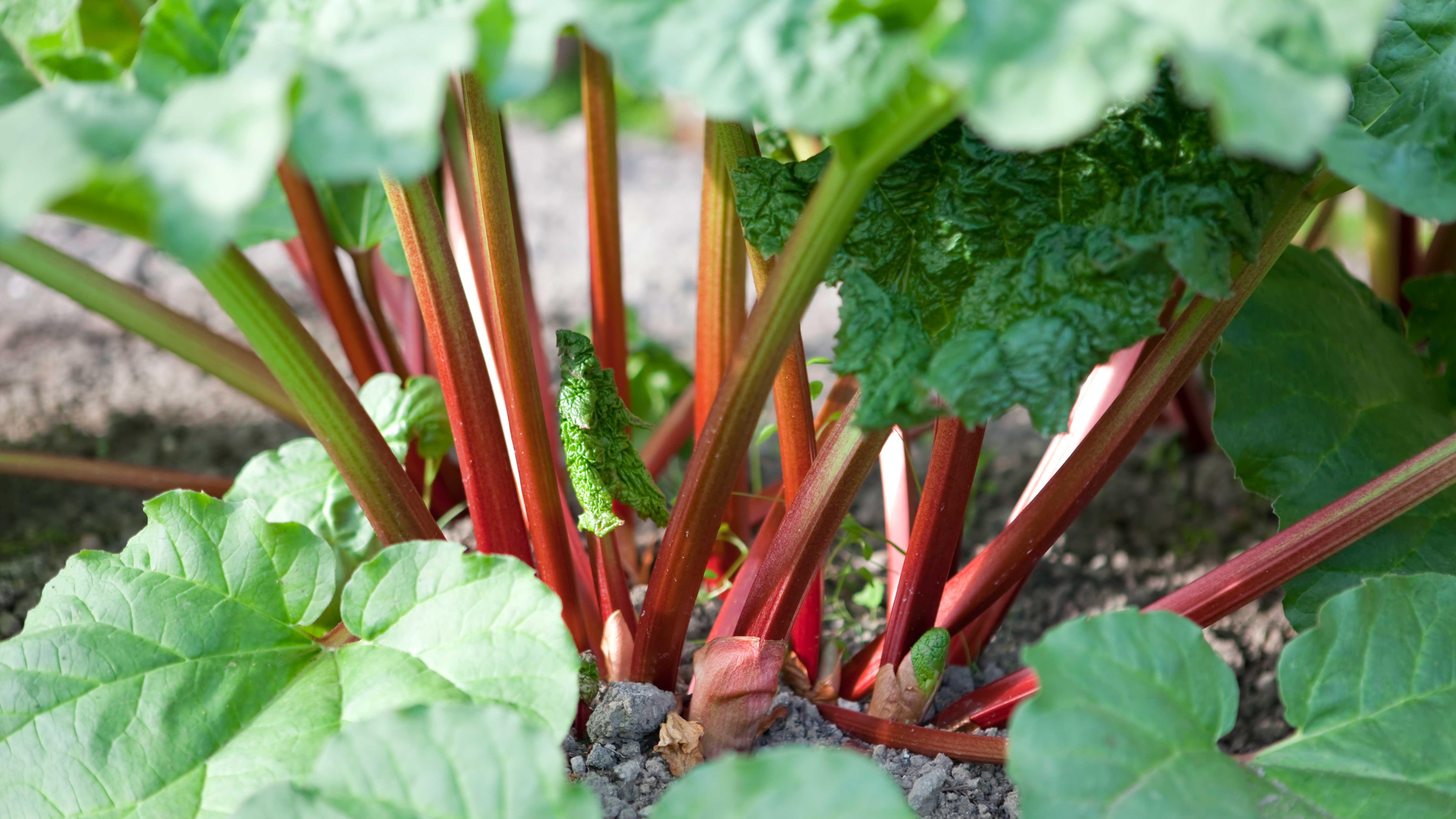
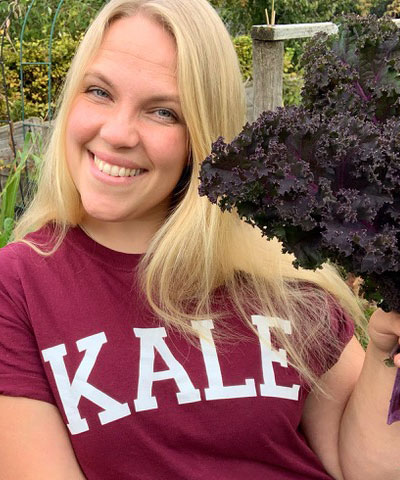
An easy to grow veg, it's important to know when to plant rhubarb to get it off to a good start.
With its huge, umbrella-like leaves and crunchy stems, rhubarb doesn’t just add a wow factor to your desserts, but to your garden, too.
The thin, stringy stems often found in the grocery store are a far cry from the chunky, tender stems you can harvest in your own backyard, so it is well worth learning how to grow rhubarb.
It's also a great crop for vegetable garden beginners as it's difficult to kill once established, can yield enormous amounts of stems, and will continue cropping for many years.
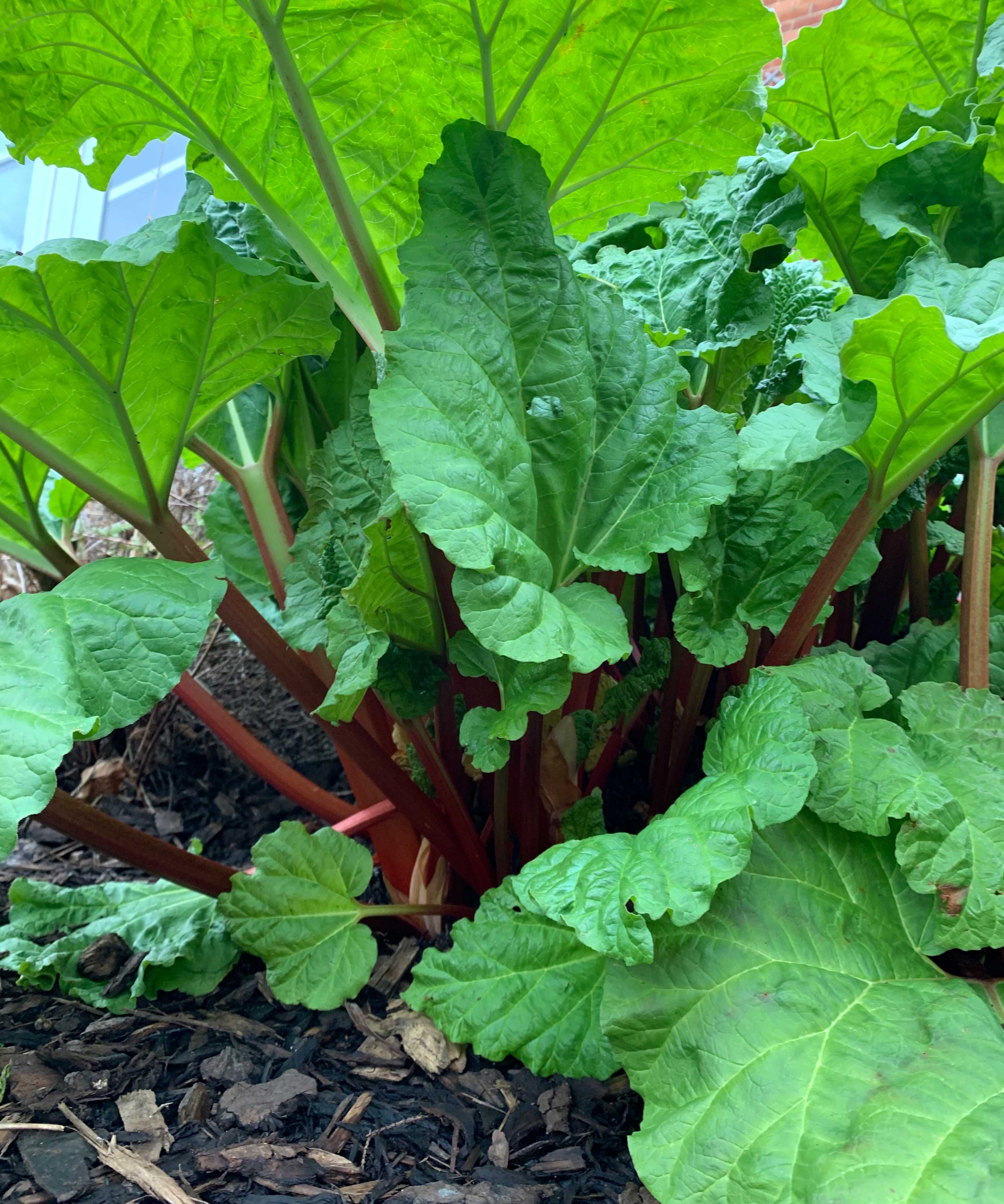
When to plant rhubarb
There are a number of options for when to plant rhubarb, depending if you want to grow it from seed, a bare root crown, from a small plant, or in as a vegetable garden container idea.
‘Rhubarb is not only aesthetically pleasing in the garden, it’s gorgeous tinged-red stalks are succulent and tasty,' says Misella Della Llana from the Pacific Northwest, author of Four Seasons Food Gardening and host of Youtube channel Learn to Grow.
When to plant rhubarb crowns
Rhubarb is often supplied as a bare root crown. As rhubarb is a cool season vegetable, it can be slightly challenging to establish if you live in one of the warmer, drier regions, so you may be wondering when to plant rhubarb to give it the best chance to thrive?
Plant rhubarb crowns from early fall, or in early spring while the crown is still dormant as part of your vegetable garden ideas. Soil that is warm and moist will help them to produce roots and not shock the plant too much.
Rhubarb crowns do not need to be protected from the cold, but it’s not a good idea to plant them into frozen or dehydrated soil, so wait for the turn of the season when temperatures start to rise (early spring) or moisture levels starts to increase (fall).
Rhubarb supplied as a bare-root crown is often a section of an older crown. These can look a little peculiar and not much like a plant at all. Sometimes they will have leaf buds and sometimes just a few papery-looking bits of old growth on the top.
Ensure that you are planting with buds or old growth facing upwards, a little above the surface, so that they can grow nice and straight and won't rot. Rhubarb crowns are very tough and will endure a surprising amount of disturbance, drought and cold once established.
You can also divide your own older rhubarb plants to make smaller crowns to expand your own collection or give to your friends or neighbors.

Can rhubarb be grown in a container?
Rhubarb can be grown in a container, so is a great option to add to your container gardening ideas.
As for when to plant rhubarb in a container, the answer is you can plant rhubarb plants that are in active growth at any time of the year.
As with planting out in the garden, you should make sure that potting mix is light and well-draining with a good amount of organic matter. It is important to allow the roots to develop, so pots need to be nice and deep – a minimum of 20 inches (50cm) deep and wide.
Ensure that the pot had plenty of drainage holes and that you water regularly to ensure the potting mix doesn’t dry out.
Rhubarb is a thirsty plant and when first planted in a container it won't have the benefit of deep roots, so make sure you water well when first planted while it gets established. One long, deep watering will be better than lots of smaller ones as it will encourage deeper root growth.
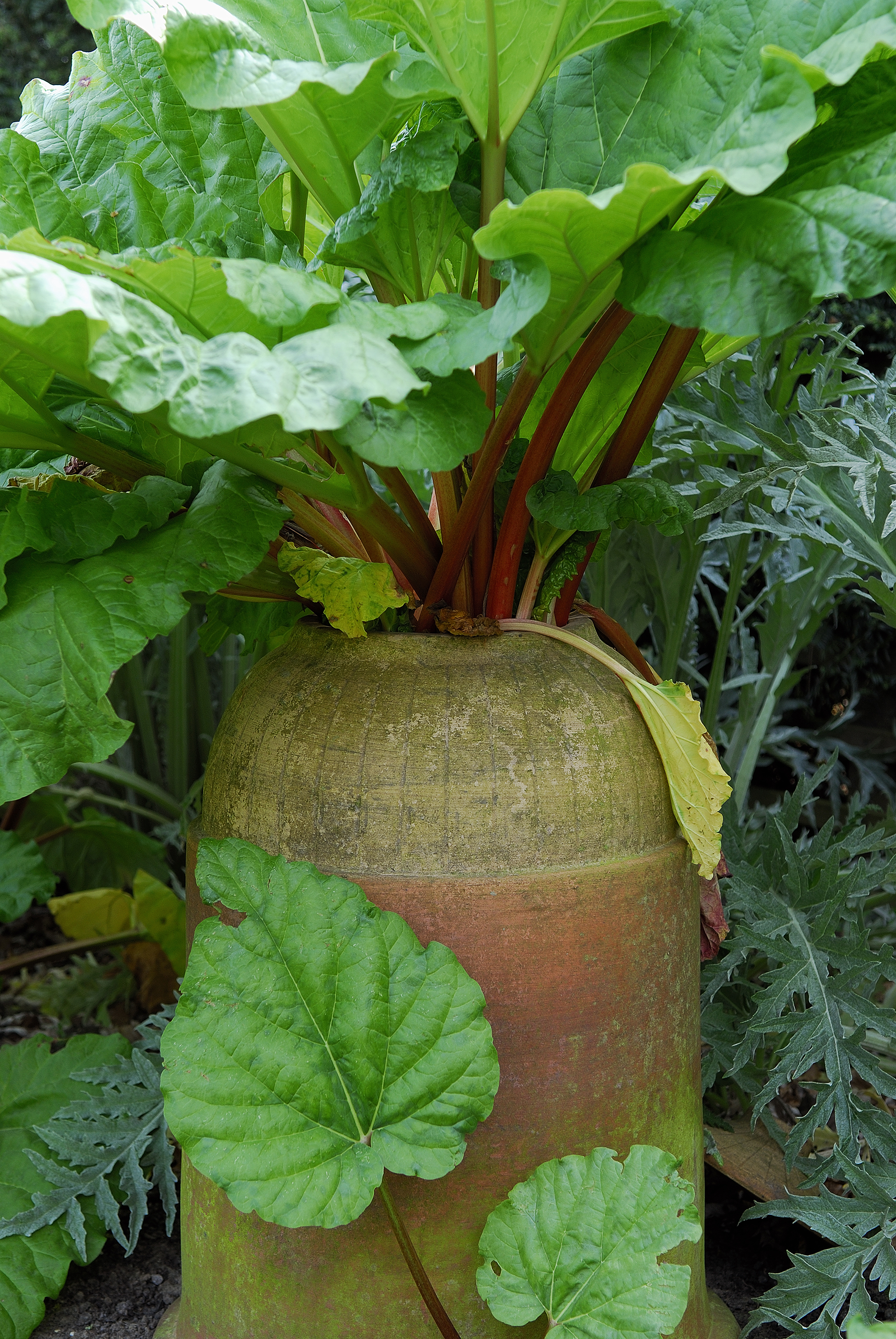
There are also ways to force rhubarb, the practice of excluding light using a forcer placed over the plant so that the stems grow faster.
'The forced, pale stems are softer and less tart than rhubarb stems which have grown in full light,' advises No Dig gardening expert Stephanie Hafferty.
However, she warns that forcing rhubarb too often can shorten its lifespan, so recommends alternating the clumps that are forced.
When to plant rhubarb if growing from seed
When to plant rhubarb from seed depends on the last frost date where you live. You need to sow the seeds approximately 8-10 weeks before the last expected frost.
However, while it is possible to grow rhubarb from seed, it is quite a slow growing plant. It will take a few years to become established enough to even take small harvests, therefore planting from seed is not usually recommended.
Planting an established rhubarb crown or transplanting rhubarb is the fastest way to create a new plant and produce a crop.
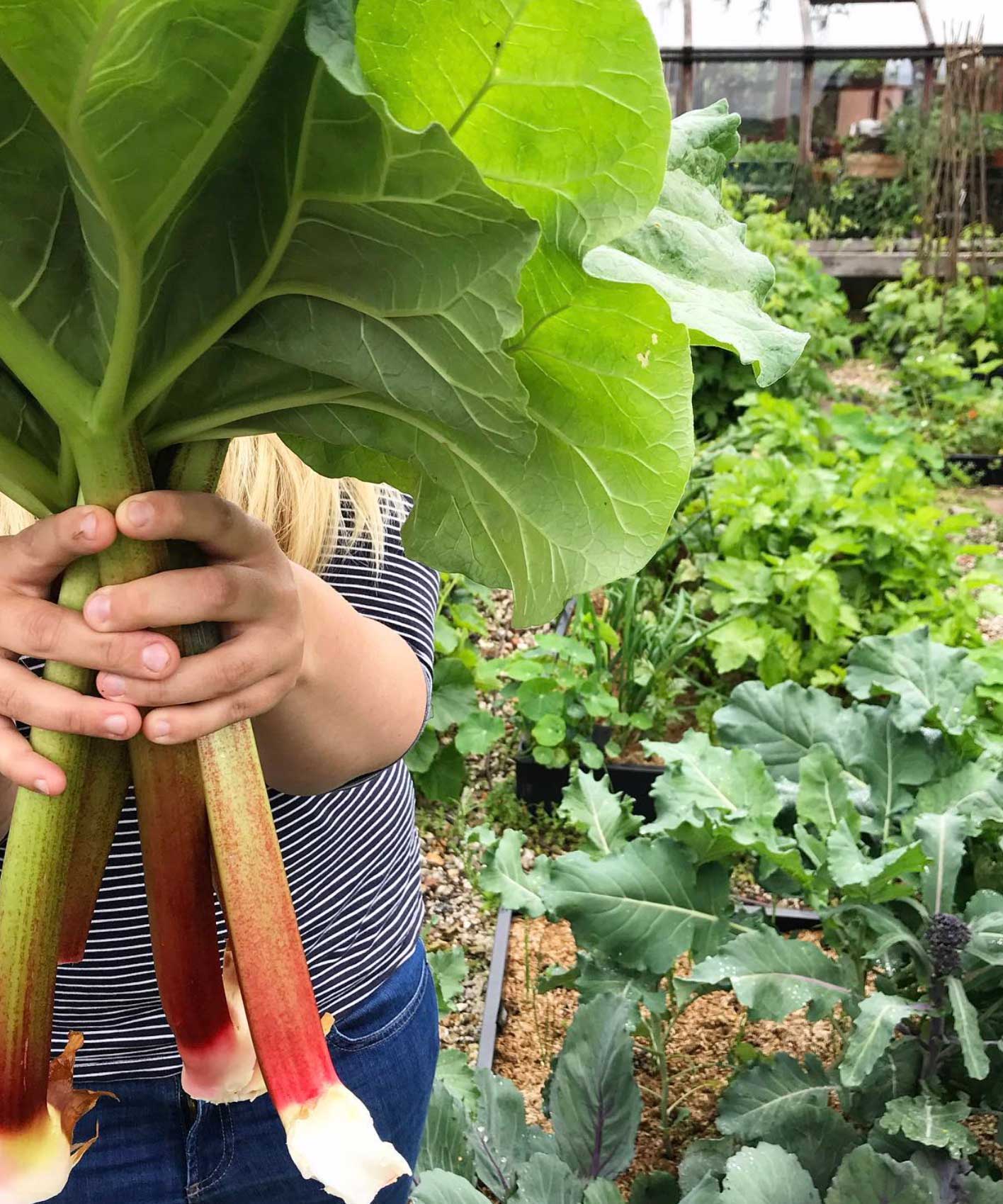
Where is the best place to plant rhubarb?
The best place to plant rhubarb is in well drained soil, rich in organic matter, such as homemade compost, although it will grow in most soils.
Rhubarb thrives in cooler zones as it requires a dormant period over winter where the leaves and stems die back.
For a reliable and heavy producing variety, try Crimson Cherry, recommends Laura from Portland Nursery . 'Victoria is also a vigorous variety but not reliably red, although you can still get the great rhubarb flavor from green stalks,’ Laura adds.
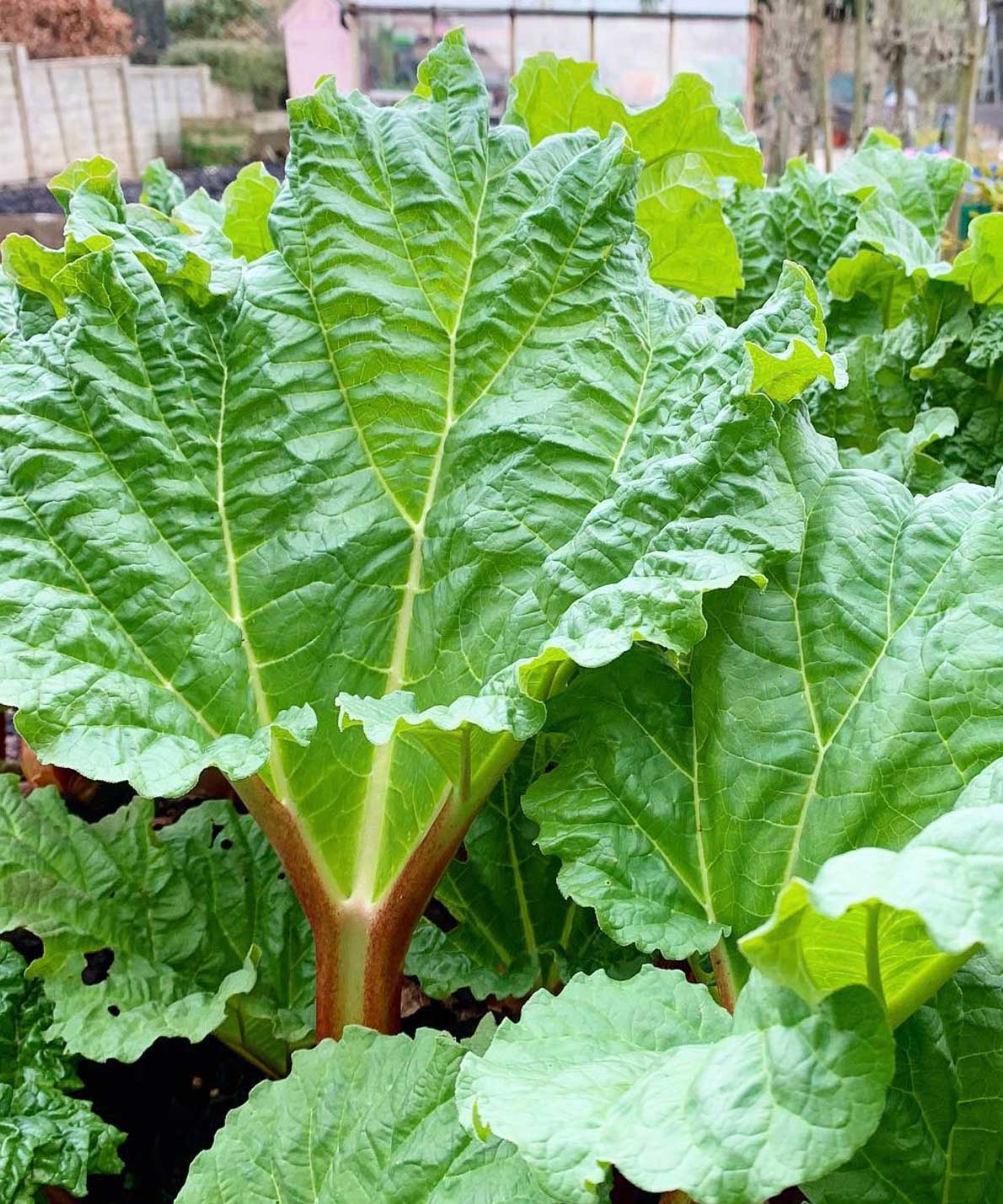
Should rhubarb be in sun or shade?
‘Rhubarb thrives best in full sun but will tolerate some shade,’ says Misella Della Llana.
Rhubarb plants should receive at least 6 hours of sunlight a day during the growing season.
Can you eat rhubarb the first year of planting?
When to harvest rhubarb? ‘Wait until the third year to harvest rhubarb stalks to allow the plants’ roots to become well-established,’ advises Carrie Engel, from Valley View Farms, Maryland.
Misella della Llana, however, advises to ‘allow plants to establish in the first year. Stalks can be harvested sparingly in the following year when they reach 12 to 16 inches (30 – 40cm).'
Ultimately it will depend on the size of the rhubarb plant and how well it settles into its new home. It is worth being patient to ensure good crops in future years. Leaves are the energy harvesting centers of the plant, so removing them will diminish a plant’s ability to grow and develop.
'The tart stalks are popularly used in many recipes including pies jams, jellies, as well as wine and cocktails,' says Misella.
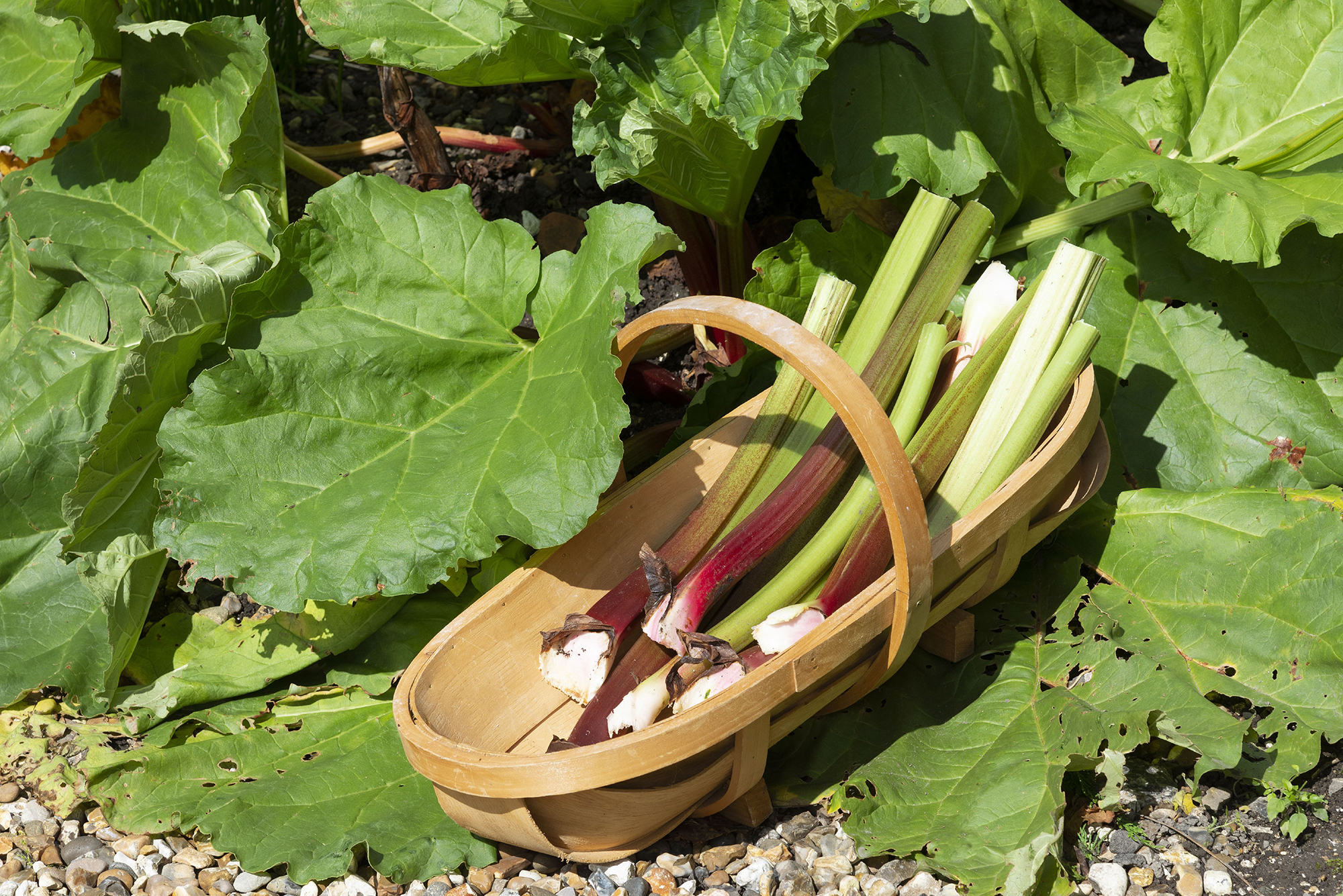
Sign up to the Homes & Gardens newsletter
Design expertise in your inbox – from inspiring decorating ideas and beautiful celebrity homes to practical gardening advice and shopping round-ups.

Becky is a freelance writer, blogger, and podcaster. Her blog, Sow Much More and her podcast The Seed Pod are aimed at making organic gardening more accessible and encourage others to grow their own food.
-
 Martha Stewart's intelligent cabinets 'take every inch into consideration' – their 'visually light' style will solve your small kitchen storage problems
Martha Stewart's intelligent cabinets 'take every inch into consideration' – their 'visually light' style will solve your small kitchen storage problems'Every kitchen can be beautiful and functional, no matter what the size': 9 years since sharing her clever storage, Martha's cabinets are just as beautiful
By Megan Slack Published
-
 This once-dated kitchen is now a timeless space with the coziest details – and its the classic color palette that's made it a chic, welcoming space
This once-dated kitchen is now a timeless space with the coziest details – and its the classic color palette that's made it a chic, welcoming spaceWarming colors and natural materials combine to create this enduringly classic kitchen scheme
By Molly Malsom Published